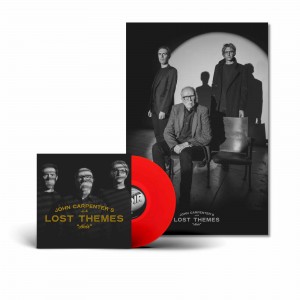In creating Freedom, McMahon brought in a powerful set of collaborators and old friends. Along with core band members, including Parker Kindred (Antony & The Johnsons, Jeff Buckley) on drums, came Chris Coady (Beach House) as producer, and Delicate Steve on guitars. This is the first Amen Dunes record that looks back to the electronic influences of McMahon’s youth with the aid of revered underground musician Panoram from Rome, who finds his place as a significant, if subtle, contributor to the record. The bulk of the songs were recorded at Electric Lady in New York, and finished at Sunset Sound in Los Angeles, where McMahon, Nick Zinner, and session bass player Gus Seyffert (Beck, Bedouine) fleshed out the recordings.
On the surface, Freedom is a reflection on growing up, childhood friends who ended up in prison or worse, male identity, McMahon’s father, and his mother, who was diagnosed with terminal cancer at the beginning of recording. The characters that populate the musical world of the album are a colourful mix of reality and fantasy. Each character portrait is a representation of McMahon, of masculinity, and of his past.
Yet, if anything, these eleven songs are a relinquishing of all of them through exposition; a gradual reorientation of being away from the acquired definitions of self we all cling to and towards something closer to what's stated in the Agnes Martin quote that opens the record, “I don’t have any ideas myself; I have a vacant mind” and in the swirling, pitched down utterances of “That's all not me” that close it.
“Miki Dora was arguably the most gifted and innovative surfer of his generation and the foremost opponent of surfing’s commercialization. He was also a lifelong criminal and retrograde: a true embodiment of the distorted male psyche. He was a living contradiction; both a symbol of free-living and inspiration, and of the false heroics American culture has always celebrated. With lyrics of regret and redemption at the end of one’s youth, the song is about Dora, and McMahon, but ultimately it is a reflection on all manifestations of mythical heroic maleness and its illusions.” – Damon McMahon.
TRACK LISTING
1. Intro
2. Blue Rose
3. Time
4. Skipping School
5. Calling Paul The Suffering
6. Miki Dora
7. Satudarah
8. Believe
9. Dracula
10. Freedom
11. L.A.




